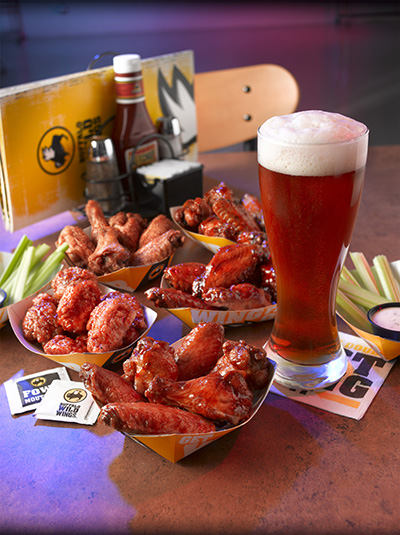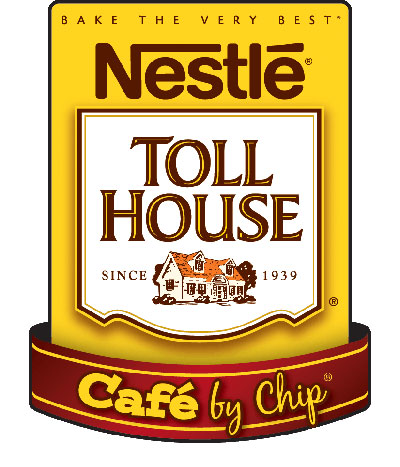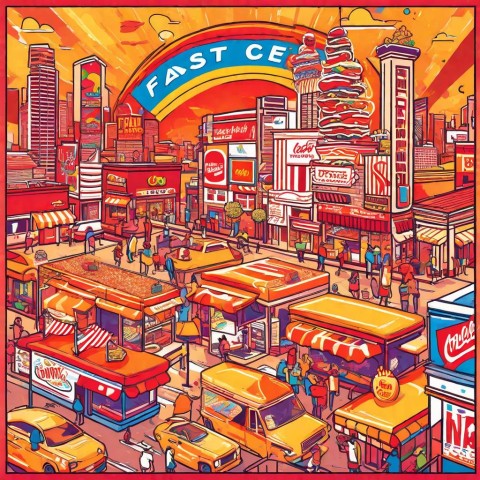We understand that not everyone enjoys grocery shopping. It can be stressful, time-consuming, and expensive if you don’t have a plan. This is especially true if you’re vegan because finding specific vegan products can be challenging.
Having a successful vegan grocery shopping experience allows you to avoid relying on fast food or eating the same thing every night. By planning your meals and having a list, you can ensure you have all the necessary vegetables and even save some money.
A vegan grocery checklist can help you stay on track, especially if you’re new to the vegan lifestyle. It reduces the chances of falling back into old eating habits and gives you the advantage of planning ahead.
Lastly, creating an all-vegan grocery list will show you that being a vegan is not just about eating greens and broccoli. It can be diverse and satisfying. With a little planning and knowledge of how to create a vegan grocery list efficiently, grocery shopping, especially for vegans, can be easy.
In our comprehensive guide, we’ll help you create a vegan grocery list, provide tips on maximizing your checklist, creating a meal plan, managing your budget, and making grocery shopping an enjoyable experience.
Making a Vegan Shopping List
A vegan grocery list includes all the things you typically eat, like grains, nuts, veggies, and fruits, but without any animal products. It’s similar to creating a regular grocery list, but you don’t include foods made from animals or animal byproducts like honey. So, no pork chops, ground beef, or chicken breast.
One way to start a vegan grocery list is to make a note of the ingredients you need when you visit the grocery store. If you plan your meals for the week, this is a great strategy because you can base your list on the dishes you’ve chosen. By listing only the items you need, you can reduce food waste and save money by avoiding unnecessary purchases.
There are also online templates available that include vegan-friendly recipes. These templates are convenient because you can simply write down the ingredients you need and use it as a reference when you go grocery shopping. Using pre-made templates can save time, especially for vegans. Home Chef is a good option to consider, as they offer a fantastic food kit delivery service with a variety of dishes, diet plans, and easy recipes, including options for vegans.
What Can’t Vegans Eat?
Vegans avoid certain foods that other vegetarians might still eat, like eggs, cheese, and other dairy products. They have a strict diet that doesn’t include any animal products or byproducts. This means they don’t eat meat, seafood, poultry, eggs, dairy cheese, milk, butter, honey, or any ingredients derived from animals.
While there are tasty vegan meat alternatives available, it’s important to consume them in moderation. It’s generally better to focus on fresh foods like fruits, vegetables, and plant-based proteins rather than processed options.
When shopping for vegan groceries, it’s important to prioritize nutrient-dense foods that provide all the vitamins and minerals your body needs. Having a vegan grocery plan can help ensure you’re getting all the necessary nutrients.
Another tip for creating a vegan shopping list is to always read labels. Unfortunately, some products may contain hidden animal ingredients. Look for labels that explicitly state the product is vegan-friendly or certified vegan. Some products may also bear the PETA logo. On the other hand, be cautious of labels indicating potential allergens like seafood.
There are also hidden animal byproducts to watch out for. Ingredients like casein, carmine, gelatin, lactose, and mono- and di-glycerides are derived from animal sources and are not suitable for vegans.
Whey powder is a common ingredient found in food products, but it’s derived from milk, making it unsuitable for vegans. However, there are now many vegan-friendly whey alternatives available.
If you enjoy drinking alcohol, keep an eye out for isinglass, which is a clarifying ingredient made from fish bladders and used in beer and wine production. While it may not have a noticeable taste, most breweries and wineries now disclose their ingredients, and isinglass is less commonly used.
Vegan Shopping List
Here’s a list of food categories and specific examples of what vegans eat, so you can get an idea of their diet. Before making your vegan grocery list, here are a few things to keep in mind, which we’ll call your vegan diet goals.
These consist of:
● Purchase fresh produce, especially leafy greens.
● Oats, rice, and potatoes are examples of complex carbohydrates to be included.
● Always read the labels.
● Choose whole grains.
● For convenience food , fill your freezer with frozen vegetables and fruits.
● When you feel like having a snack, choose something healthier, such as dark chocolate.
Keeping those goals in mind, in this instance are a few things you might want to add to your vegan shopping list…
Proteins
We mentioned this before, but it’s important to note that not eating meat doesn’t automatically mean you’ll have a protein deficiency. If you have a balanced diet, you can still get enough protein in your body.
However, it can be a bit more challenging to find good vegan-friendly protein sources, especially if you’re new to this way of eating. So, here are some examples of our favorite plant-based proteins to help you out…
Seeds and Nuts
Seeds and nuts are a terrific way to add protein to any meal or snack since they are savory, adaptable, and filled with protein. Given that there are countless distinct types of nuts and seeds, the options are endless.
● Brazil nuts
● Almonds
● Chia seeds
● Cashews
● Hazelnuts
● Flaxseed
● Pecans
● Macadamia nuts
● Pumpkin seeds
● Pine nuts
● Sunflower seeds
● Walnuts
● Sesame seeds
Quinoa
Quinoa is a grain in the traditional sense of the word, but it also has a high level of protein and is a complete protein.
Quinoa, which is also high in other nutrients, can be consumed as a morning food or as a lunch or dinner main dish.
Seitan
For people following a plant-based diet, seitan is a popular protein source. It’s also known as wheat gluten or wheat meat. When cooked, it looks and feels like meat, but it’s actually made from gluten.
Seitan is a great protein option because it contains around 25 grams of protein per 100 grams. It also provides iron, calcium, phosphorus, and selenium. However, if you have celiac disease or a gluten sensitivity, it’s important to avoid seitan since it is made from gluten.
Soy-based Goods
Protein-rich soy products like tempeh and edamame and tofu are also available. Remember that the way the soy product is prepared will affect the protein content.
For instance, 12 cups of edamame beans have 8.5 grams of protein while 12 cups of tempeh have about 15 grams.
Beans/Legumes
Beans offer more than just protein; they provide a range of other important nutrients as well.
Apart from being a good source of protein, beans are also rich in folate, iron, manganese, phosphorus, and potassium. Research has shown that diets that include plenty of beans can help lower blood pressure, regulate blood sugar levels, and reduce cholesterol levels. So, including beans in your diet can have multiple health benefits.
● Black-eyed peas
● Black beans
● Chickpeas
● Cannellini beans
● Kidney beans
● Fava beans
● Lima beans
● Lentils
● Peanuts
● Mung beans
● Split peas
● Pinto beans
● Peas
Veggies
There would, of course, be veggies. Do you believe you can get away from them? We’re confident that as you stay on your vegan diet, you’ll come to appreciate the flexibility of veggies and develop a similar passion for them as we have.
There are plenty of interesting vegetables you can try; this isn’t a complete list! Our faves are:
● Beets
● Asparagus
● Cruciferous vegetables
⮚ Brussels sprouts
⮚ Broccoli
⮚ Cauliflower
⮚ Cabbage
● Celery
● Carrots
● Cucumber
● Eggplant
● Corn
● Onions
● Mushrooms
● Peppers
● Parsnips
● Pumpkin
● Potatoes
● Spinach
● Radish
● Squash
● Sweet potato
● Yam
● Zucchini
● Tomatoes
● Leafy Greens: Eat your greens, as your mother advised, and she was correct. Through vitamins A, B, C, E, and K, dark leafy greens constitute a stronghold of nutrients that are going to keep you healthy. They also contain fiber, antioxidants, anti-cancer properties, iron, magnesium, and calcium.
⮚ Collard greens
⮚ Arugula
⮚ Lettuce
⮚ Kale
⮚ Swiss chard
⮚ Spinach
Fruits
Nature’s sweets! Fruits are tasty, guilt-free, and, of course, fully vegan. They are also nutrient-dense and rich in flavor. Know which fruits are higher in fructose (such as mangoes), which means you should consume them in small amounts, and which kinds are lower in fructose (such as berries), as you can’t undergo a vegan diet without them.
● Avocados
● Apple
● Blackberries
● Bananas
● Cantaloupe
● Blueberries
● Figs
● Cherries
● Guava
● Grapefruit
● Lemon
● Jackfruit
● Mangoes
● Lime
● Papaya
● Oranges
● Pears
● Peaches
● Pineapple
● Plums
● Strawberries
● Watermelon
● Raspberries
Fats/Oils
The mere fact that you can no longer use butter doesn’t spell the closure of your gastronomic explorations. Butter substitutes made from plant-based, vegan-friendly fats and oils are excellent choices. It’s important to constantly bear in mind that distinct oils smoke at different phases, and certain oils are better suited to specific cooking methods than others.
● Avocado oil
● Almond oil
● Coconut oil
● Canola oil
● Grapeseed oil
● Coconut butter
● Sesame oil
● Olive oil
Grains
Although all grains are suitable for vegans, a balanced diet ought to contain complex carbohydrates. Complex carbohydrates are more effective energy sources and can enhance intestinal health. When shopping for food, choose whole-grain and high-fiber products.
● Barley
● Amaranth
● Bulgar
● Buckwheat
● Couscous
● Cornmeal
● Freekeh
● Farro
● Millet
● Kamut
● Orzo
● Rice
● Oats
● Sorghum
● Rye
● Wheat berries
● Whole-wheat flour
● Spelt
Spices
Spices and herbs are essential in vegan cuisine. Spices and herbs enhance the overall taste of your food while also increasing its nutritional worth. The following herbs and spices taste delicious both fresh and dried.
● Chives
● Basil
● Cinnamon
● Cilantro
● Cumin
● Chili powder
● Ginger
● Dill
● Oregano
● Nutmeg
● Parsley
● Paprika
● Tarragon
● Thyme
● Turmeric
● Rosemary
We also really enjoy the hot sauce, but remember you review the label because some of it contains components that aren’t suitable for vegans.
Non-Perishables
It’s a great idea to have canned foods available for those days when you might be low on groceries or short on time. Canned versions of common grocery items, like chickpeas, are much easier to prepare.
While canned goods sometimes get a bad reputation, it’s important to know that fruits and vegetables in cans (and frozen ones too) are actually preserved at their peak ripeness. This means they retain their nutritional value, making them a convenient and nutritious option to have on hand.
Snacks
We advised staying healthy rather than torturing yourself. Everything should be done in moderation, as we previously stated, but it doesn’t mean you shouldn’t occasionally have “fun”. Do you have a craving for Oreos? That’s absolutely ok! Additionally, there are many plant-based ice creams and chips available that don’t sacrifice flavor. Also, don’t overlook dried fruit. You’re aware that nature’s candy has dried up. They’re a better choice than candy but bear in mind that fruit can nevertheless contain a lot of sugar.
Enjoy yourself, then. As long as you like your snacks in moderation, you’re free to keep your snack cabinet stocked.
Is a Plant-Based Diet Expensive?
The cost of food can vary greatly depending on various factors when following any diet, including a vegan one. For example, factors like the number of people in your household, whether everyone is vegan or not, the quantity of food you need, and where you prefer to shop can all impact your food expenses.
Your plant-based diet can be as affordable or as expensive as you choose. If you mainly consume meat substitutes, your food budget may be higher compared to if you focus on fresh produce, vegan-friendly proteins, and nutritious grains. Ultimately, the cost of your meals will depend on the factors mentioned above.
Read Also: How to Create the Perfect Vegan Shopping List: F & B Magazine
Conclusion
Making a vegan grocery list is a fantastic way to stay organized and avoid making impulsive purchases of food that might wind up going to waste. When you shop hungry, this is very likely to happen. You’re far more inclined to shop idly when you plan vegan meals, which will help you save money.
As was previously mentioned, choosing dishes using identical ingredients will help you use up the food you purchase. By doing this, you’ll be sure to avoid spending more money than necessary in addition to being more assured that you won’t be wasting as much food since you’ll be cooking it all yourself!







